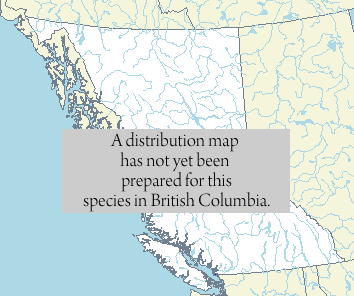The Sei Whale is a large baleen whale in the family Balaenopteridae. It is smaller than the Blue Whale and the Fin Whale, reaching 18-20 m in length, although it is similar in appearance to the Fin Whale (Jefferson et al. 2008, Wikipedia 2011). It is sleek and streamlined in appearance, with dark gray or brown colouration, a whitish area on the underside, the dorsal fin rises at a steep angle from the back, 32-65 ventral pleats, 219-402 black, fringed baleen plates (Jefferson et al. 2008). Wikipedia (2011) provides the following description of size: "Mature adults typically measure between 12–15 meters (39–49 ft) and weigh 20–30 tonnes (20–30 long tons; 22–33 short tons). The southern sei whale is larger than the northern. Females are considerably larger than males. The largest known sei whale measured 20 meters (66 ft), and weighed between 40–45 tonnes (39–44 long tons; 44–50 short tons). The largest specimens taken off Iceland were slightly longer than 16 meters (52 ft).] At birth, a calf typically measures 4–5 meters (13–16 ft) in length."
Map

Species Information
Biology
|
Distribution
|
Conservation
|
Status Information
BC Ministry of Environment: BC Species and Ecosystems Explorer--the authoritative source for conservation information in British Columbia. |
Additional Notes
|
Taxonomic and Nomenclatural Links
Additional Range and Status Information Links
Additional Photo Sources
Species References
|
Gregr, E.J., J. Calambokidis, L. Convey, J.K.B. Ford, R.I. Perry, L. Spaven, and M. Zacharias. 2006. Recovery Strategy for Blue, Fin, and Sei Whales (Balaenoptera musculus, B. physalus, and B. borealis) in Pacific Canadian Waters. IN Species at Risk Act Recovery Strategy Series. Vancouver: Fisheries and Oceans Canada. vii + 53 pp. Available online.
Jefferson, Thomas A., Marc A. Webber and Robert L. Pitman. 2008. Marine Mammals of the World: A Comprehensive Guide to their Identification. Elsevier, New York. Available online. |